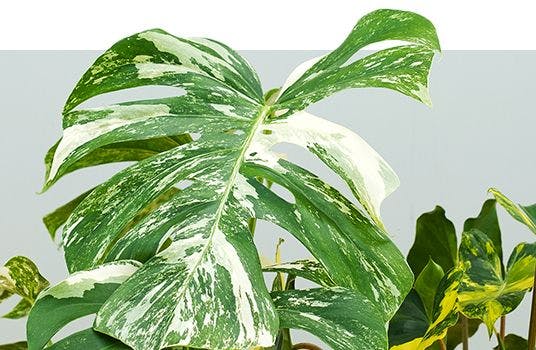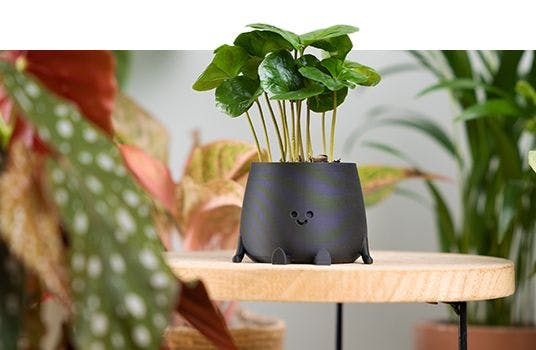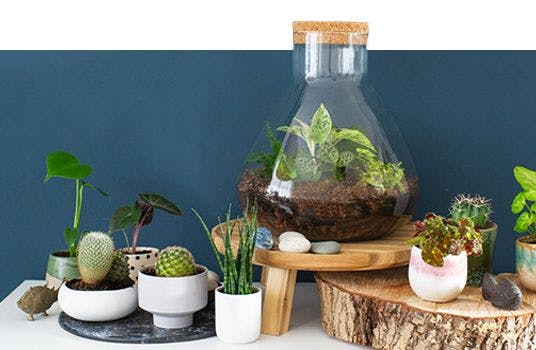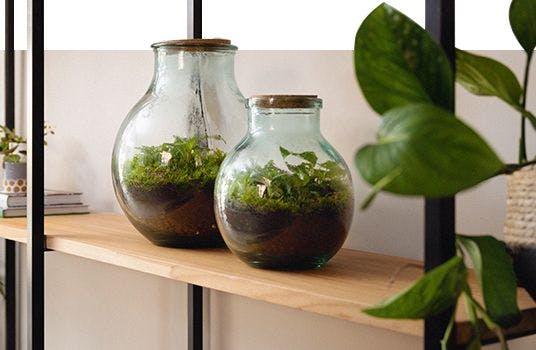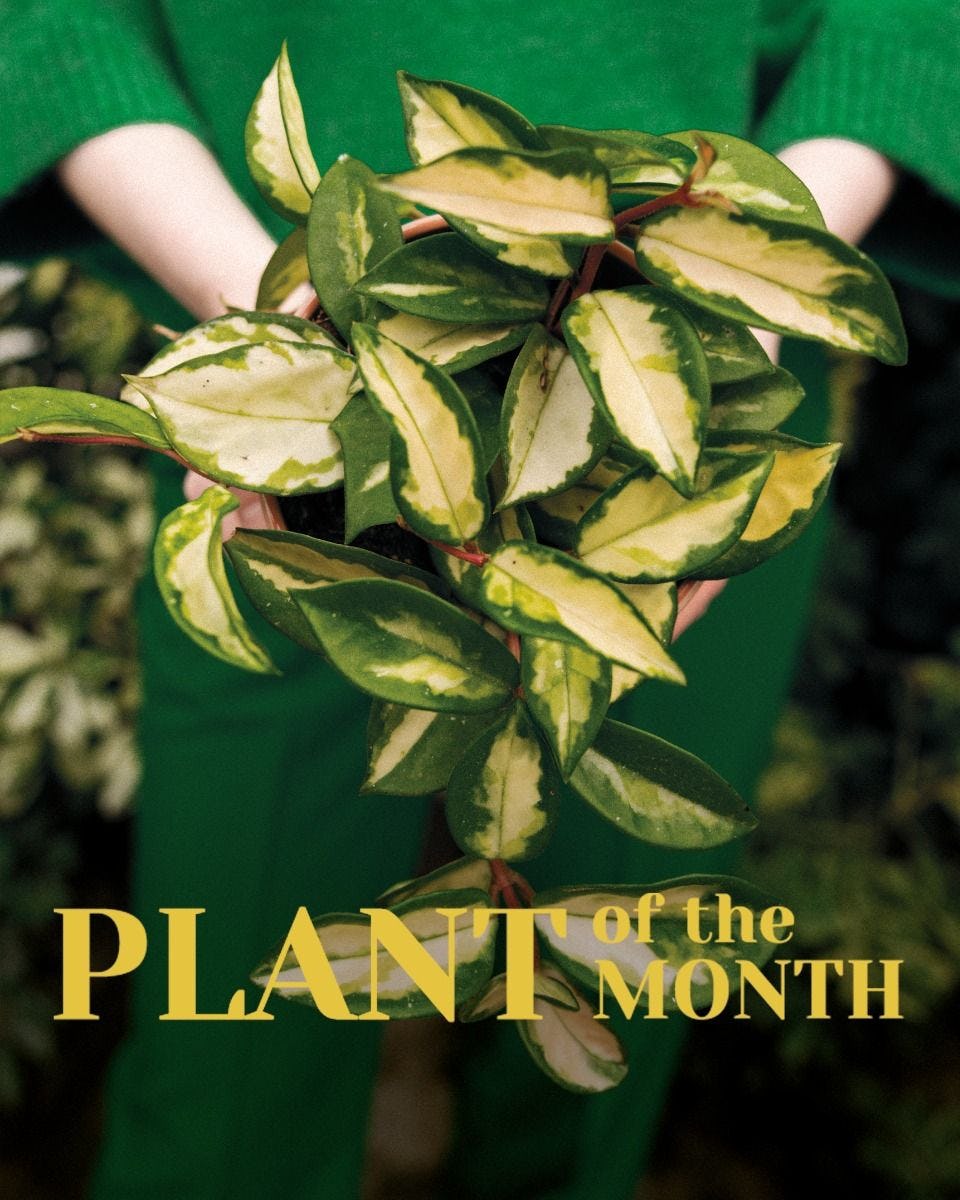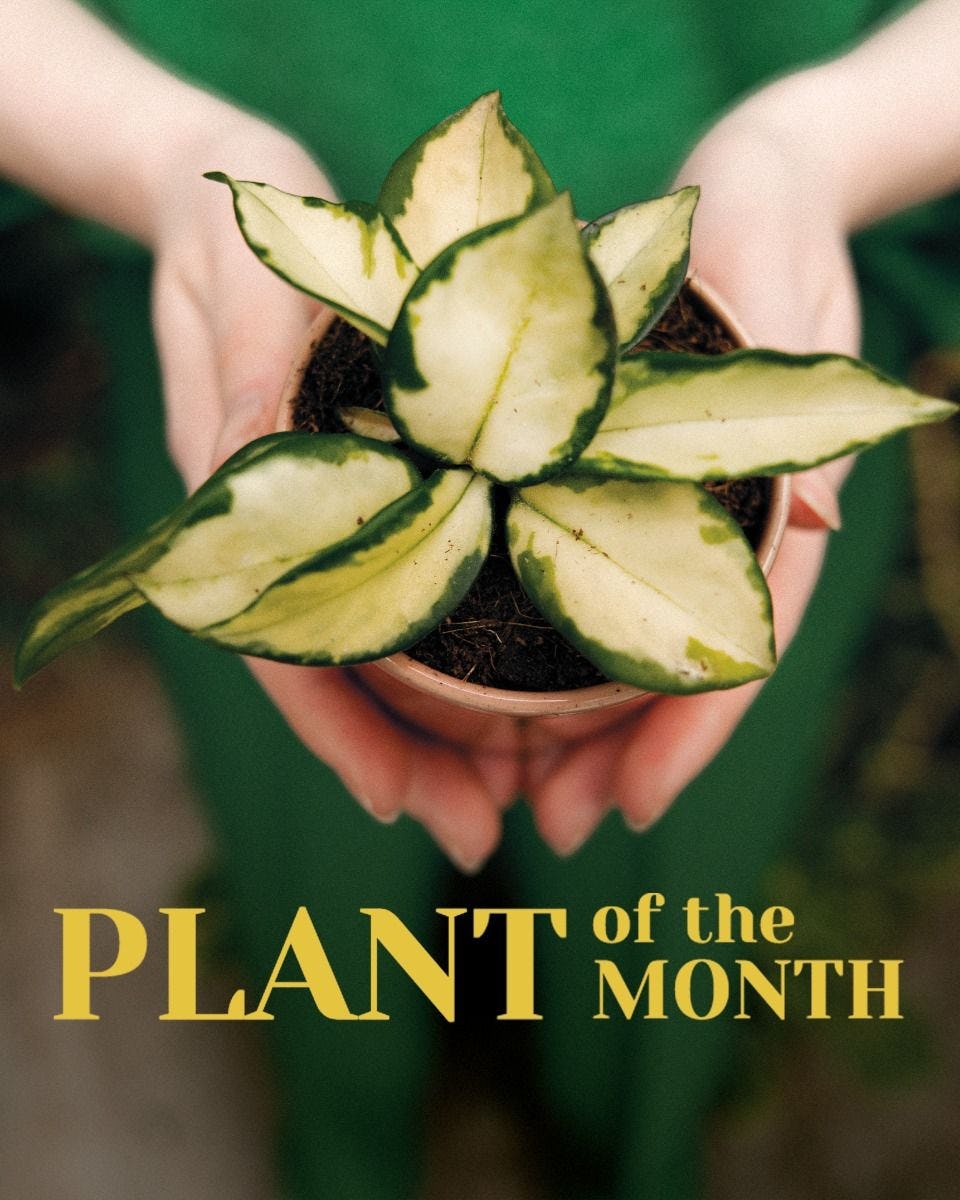
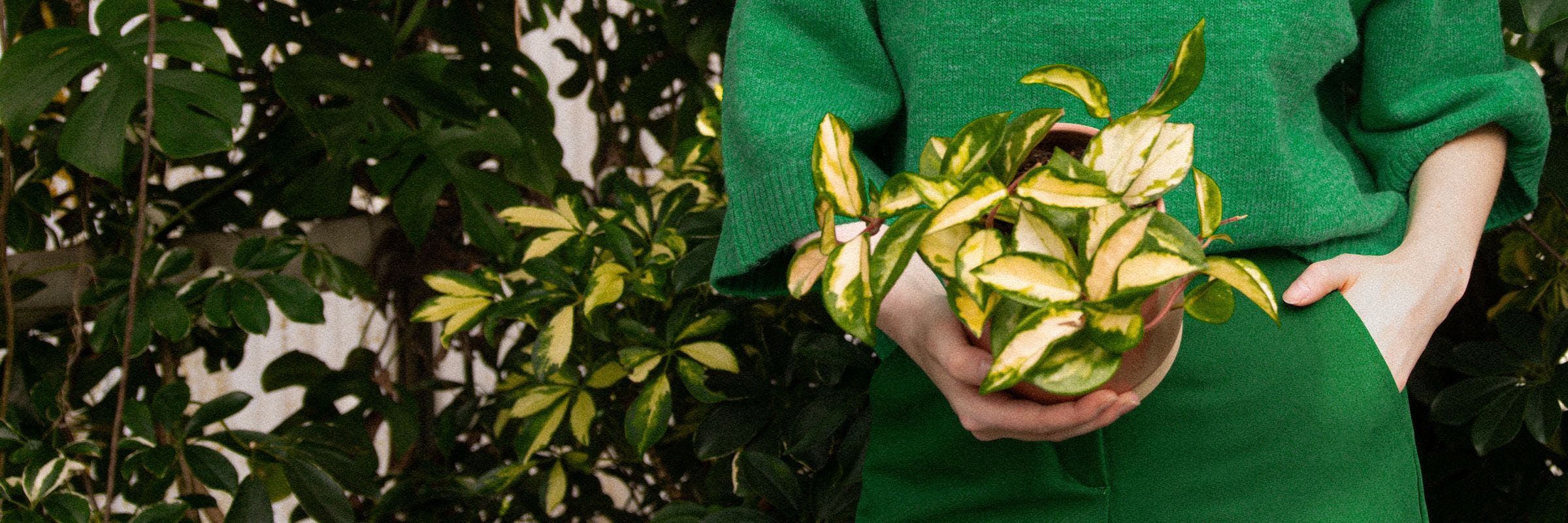
Plant of the month:
Hoya Carnosa Tricolor
A new month means a new plant in the spotlight! This month we have chosen an enchanting plant with striking variegated leaves. You will find shades of green, cream and pink, which makes this plant a true spectacle to behold. This is the Hoya Carnosa Tricolor and once you lay your eyes upon it, you know why we have chosen to put this stunner on a pedestal. Not only is the foliage stunning, the complementary flowers are also a sight for sore eyes. And that is not all, we also have a special discount on this plant as long as the month of April is up and running.
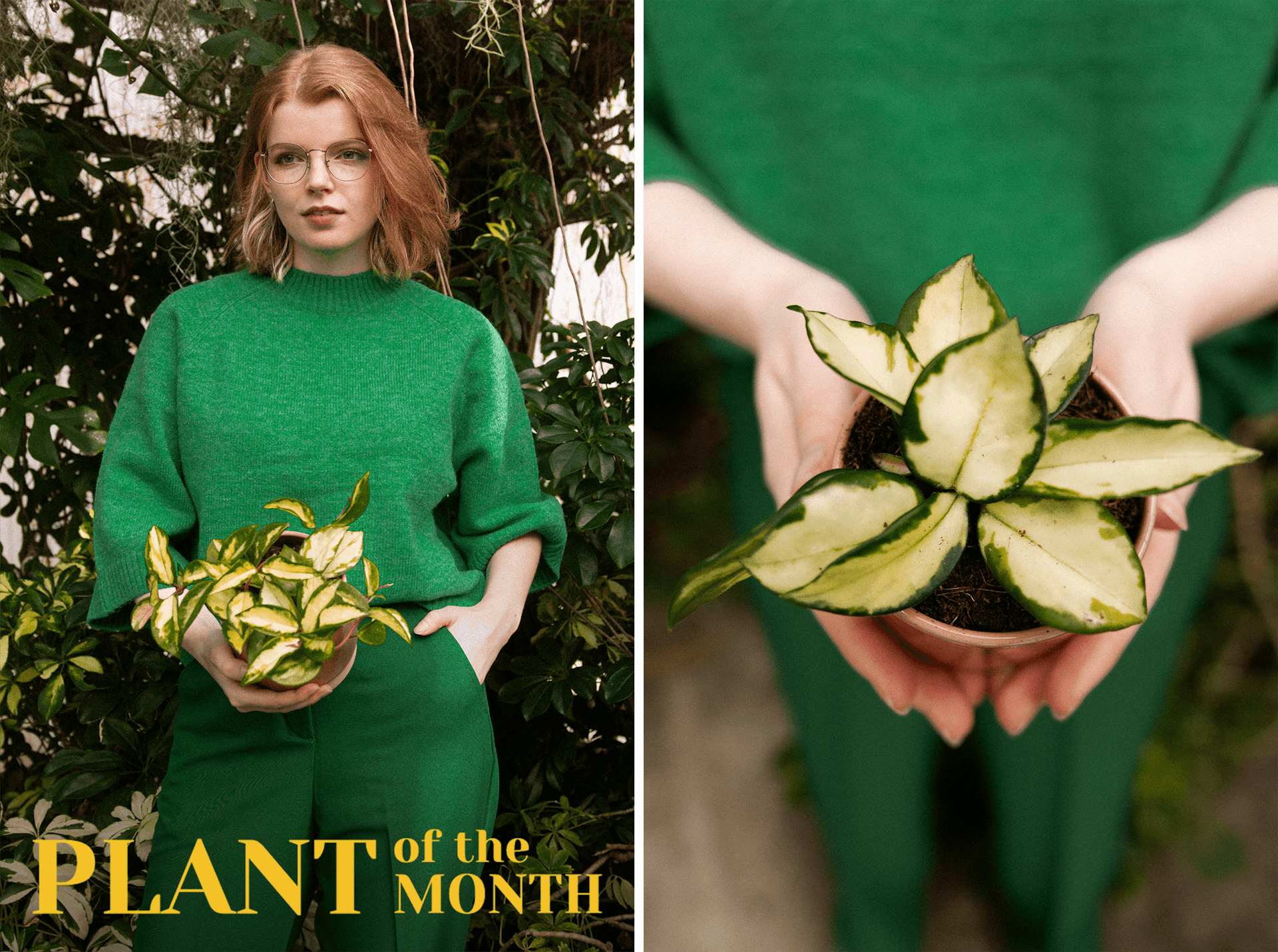 - Fun fact! In the 19th century, a botanist gave it the name "Hoya" as a tribute to his friend, Thomas Hoy.
- Fun fact! In the 19th century, a botanist gave it the name "Hoya" as a tribute to his friend, Thomas Hoy.
The Hoya Carnosa has been in cultivation for over 200 years. Nowadays there are many variants in various colours. The plant even received the award of Garden Merit by the Royal Horticultural Society, which is pretty impressive. The Hoya Carnosa Tricolor is originally native to Australia and Eastern Asia and was discovered by Botanist Robert Brown in the early 1800’s.
Hoya Carnosa Tricolor
care guide
Now that you have quite a lot of information about this pretty plant, you might want to know how to care for it when it's in your possession. Here we dive into what is needed to make your Hoya Carnosa Tricolor flourish!
You can start off by picking a spot where your Hoya can receive lots of bright indirect light. This might be near a less sunny window, or a few metres away from a sunny window. Either spot would be perfect for this plant. Too much light will result in the leaves scorching from the heat. Too little light on the other hand, will stagnate the growth and make the plant become leggy. So pick a good spot to prevent these problems.
- Expert tip! If you have a spot that is a bit dark, you might want to add a grow light, so your Hoya can still flourish on your chosen spot. Or are your leaves scorching and you don’t want to move your plant? That is possible if you place a thin see-through curtain between the window and the plant. This will hold back the harsh sun rays, but still allow light to shine through.
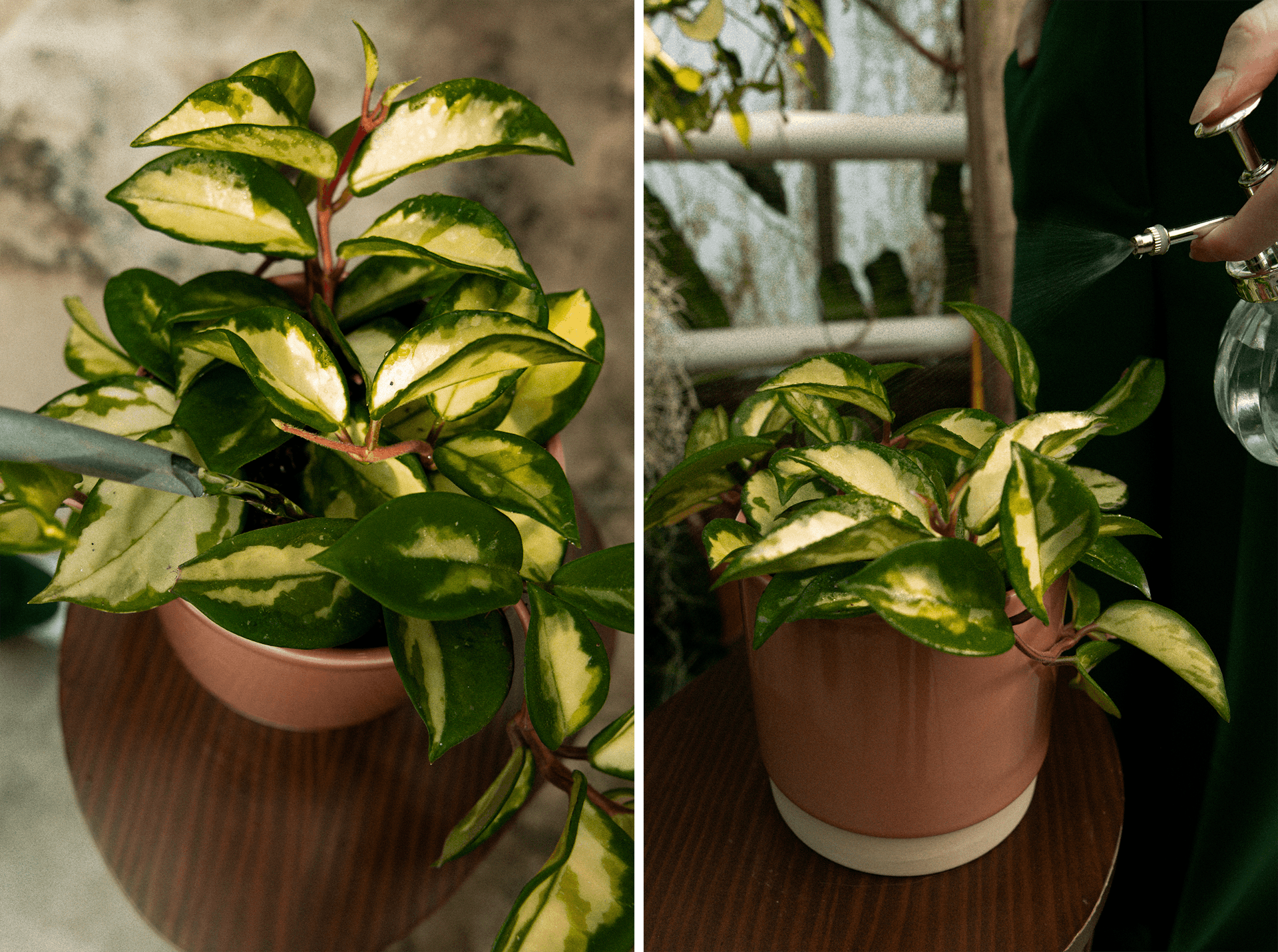
Hoya’s don’t need lots of water. It is better to let the soil dry out for 50% between waterings. If the soil stays moist or wet, the chance is big that it will cause root rot. It is also best to provide water that is at room temperature. Before watering, always check the soil by sticking your finger in it. As long as it feels moist, you should wait with providing a splash of water.
- Fun fact! Did you know that Hoya’s are climbing succulents? That is why their water needs might be similar to other succulents that are growing within your urban jungle!
The Hoya’s are epiphytic plants, which means that they grow on top of other plants in nature. This requires a special potting mix inside our urban jungles. We have put all the substrates you need to make your Hoya feel right at home in our epiphyte potting mix kit. We would suggest mixing this with a ratio of: 85% tree bark, and 10% sphagnum moss. 3% perlite and 2% charcoal.
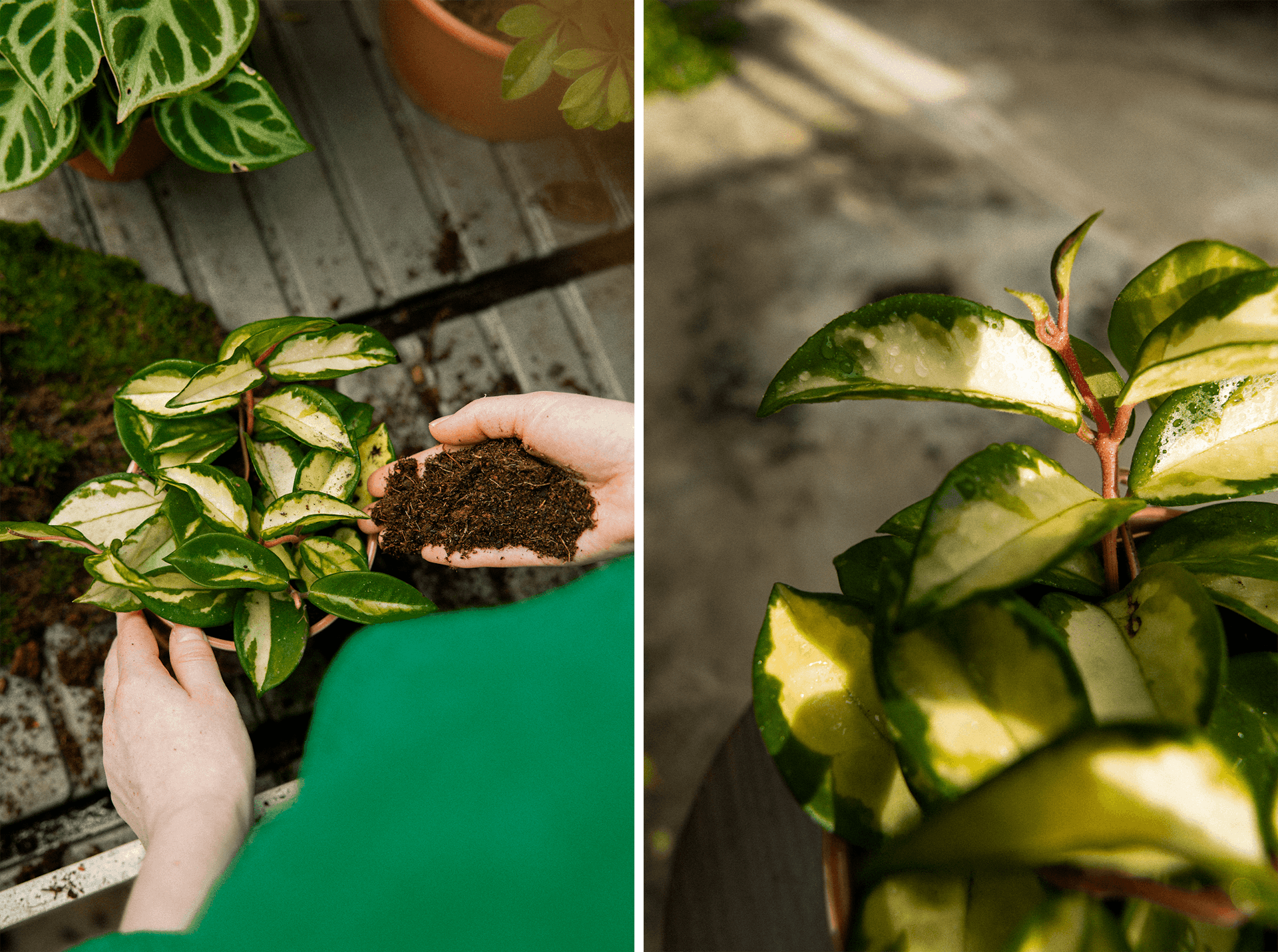
-Fun fact! In winter you can induce flower growth, by giving less water to your Hoya. It will kind of go in survival mode and will produce flowers. Never leave your Hoya standing too dry for too long and as soon as you see flowers, you should go back to watering as you normally would.
Propagating
Hoya Carnosa Tricolor
Are you successfully growing your Hoya Carnosa Tricolor and would you like to propagate your houseplant? That is possible! The easiest way to multiply your plant is through stem cuttings. Let’s get into how to do it!
Step 1
Make sure the overall health of the plant is good. That means your Hoya is producing new growth and is not yellowing or leaves falling off the plant. Also, make sure to disinfect the tools you want to use on your Hoya. This will prevent any bacteria or other microorganisms left on the tools from getting the chance to harm your plant.
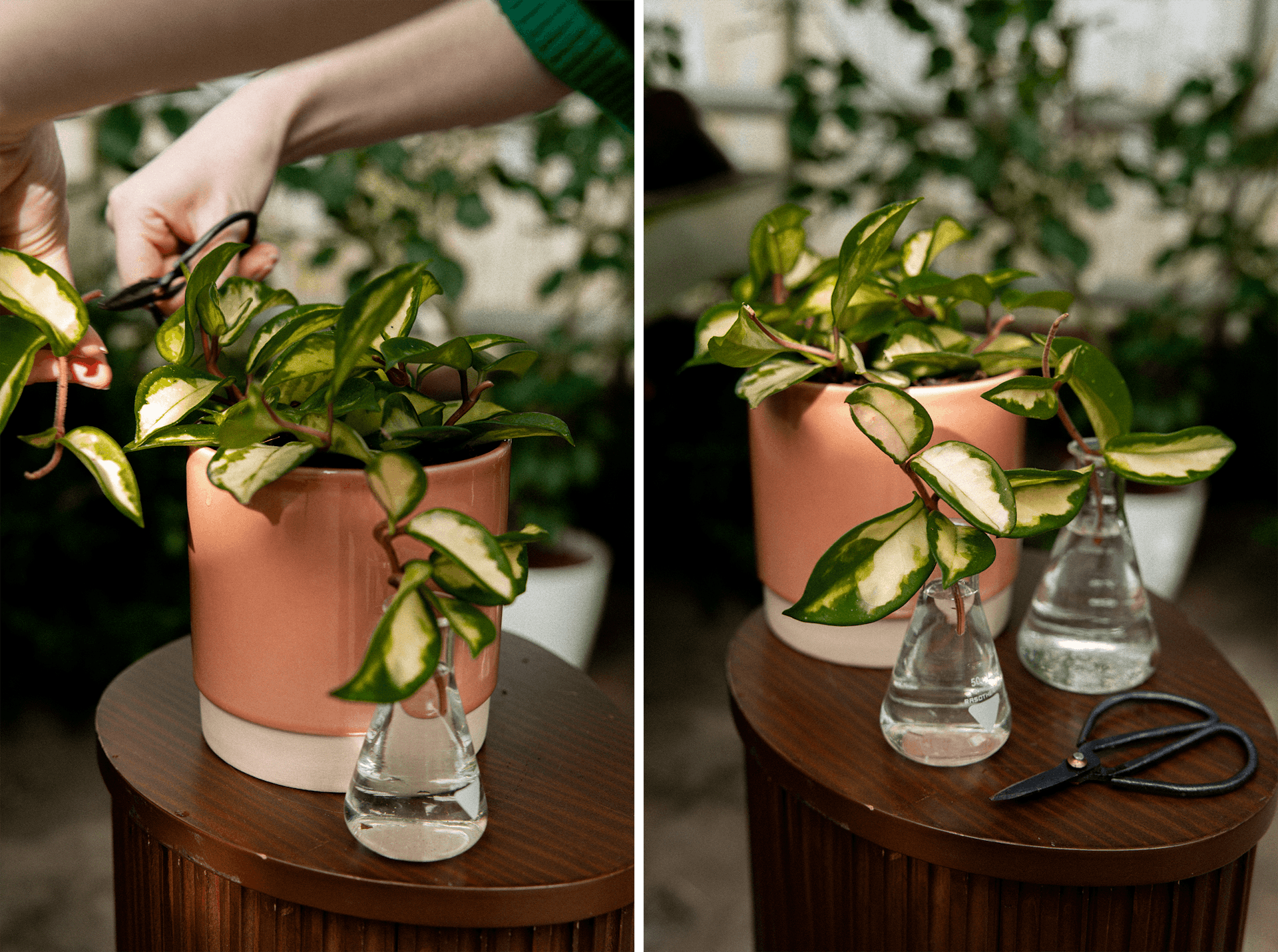
Step 2
Choose the part you want to propagate. You can basically cut any piece, make sure the cuttings have 2-3 leaves per cutting. You need to cut in the middle between 2 nodes. You can recognize the nodes as a thicker bump on the stem.
- Fun fact! The Hoya is a member of the Apocyneae family. That makes this plant a distant relative of the Oleander and the Periwinkle.
Step 3
You can now take off the bottom leaf and choose your substrate. Water is an easy-access substrate that also shows the root growth perfectly. But any substrate of choice would do the trick. Place the cutting with the bottom node in the substrate. When you choose a different substrate, like sphagnum moss, you need to keep it moist so the cutting can develop roots.
Step 4
Lots of patience! Your cutting is working super hard on producing roots and growing into a little baby plant. Your cutting can be transferred from the substrate to a potting mix when the roots are about 10 centimetres long. Good luck!
- Fun fact! Did you know the flowers of the Hoya can smell absolutely amazing? The scents vary from cinnamon to chocolate, what a delight!
Frequently asked questions
about Hoya Carnosa Tricolor
How fast does Hoya Tricolor grow?
The Hoya Carnosa Tricolor can grow quite rapidly, compared to some other plants. Indoors the plant can even reach a length of up to 2 metres!
What is the common name for Hoya Carnosa Tricolor?
The common name for the Hoya is Wax Flower, referring to the flowers the Hoya can produce.
Is Hoya Carnosa Tricolor easy to grow?
The Hoya’s are considered to be rather easygoing. You just have to keep in mind their special needs, but once you have figured those out, they shouldn’t be troublemakers.
Is Hoya Carnosa Tricolor rare?
Yes, the Hoya Carnosa Tricolor is considered to be rare. It might be accessible, due to demand and supply. But that doesn’t make this less of a beauty! Just reminding you that this plant has won an award, can’t say that about lots of other plants, right? ;)
Why is my Hoya Carnosa Tricolor dying?
The main reason why the Hoya Carnosa is dying has to do with overwatering the plant. Make sure to cut back on water when you see your Hoya isn’t doing great. If that doesn’t help, a fresh potting mix like the one we suggested might do the trick for you.
What are the most common pests on the Hoya Carnosa Tricolor?
Due to the thick leaves, pests that love sap might want to take advantage of your Hoya. These pests can be aphids, mealybugs, scale and spider mites. So keep an eye out for these itchy creatures, to prevent your Hoya from getting harmed by them.
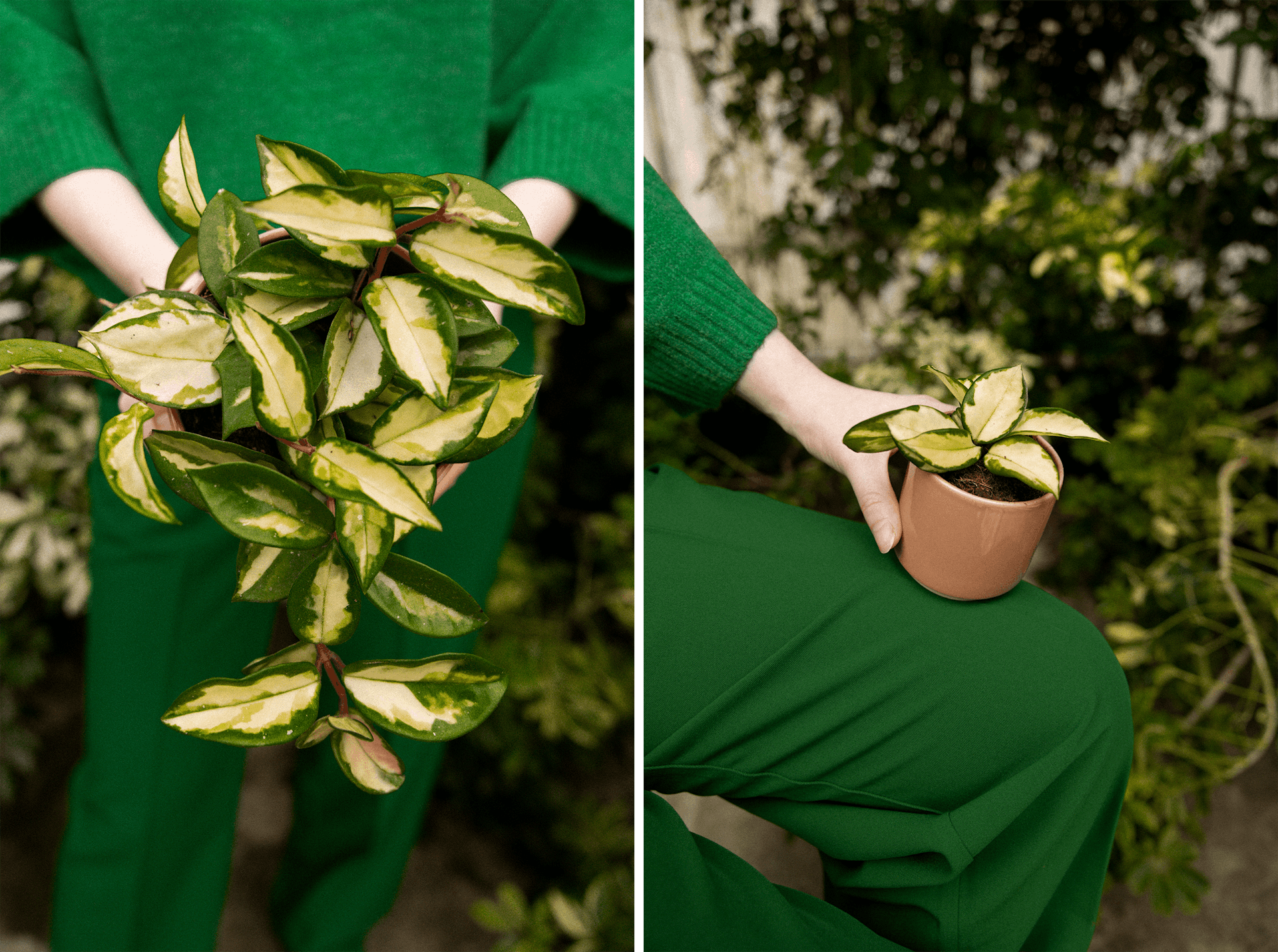

Buy Hoya Carnosa Tricolor online
Are you as excited about this stunning plant as we are? If you're eager to enrich your ever-growing jungle with this beauty, you're in luck! We offer different sizes to choose from: Baby, to Large. All that's left is to decide on the size, and let this beauty illuminate your urban jungle with its charm!
Free shipping from €75,-
We ship our plants all over Europe!
30 day health guarantee
For all our happy plants. Read more about our guarantees.
- Delivery throughout Europe
- Free shipping for orders over €75,-
- 30 day PLNTS health guarantee

